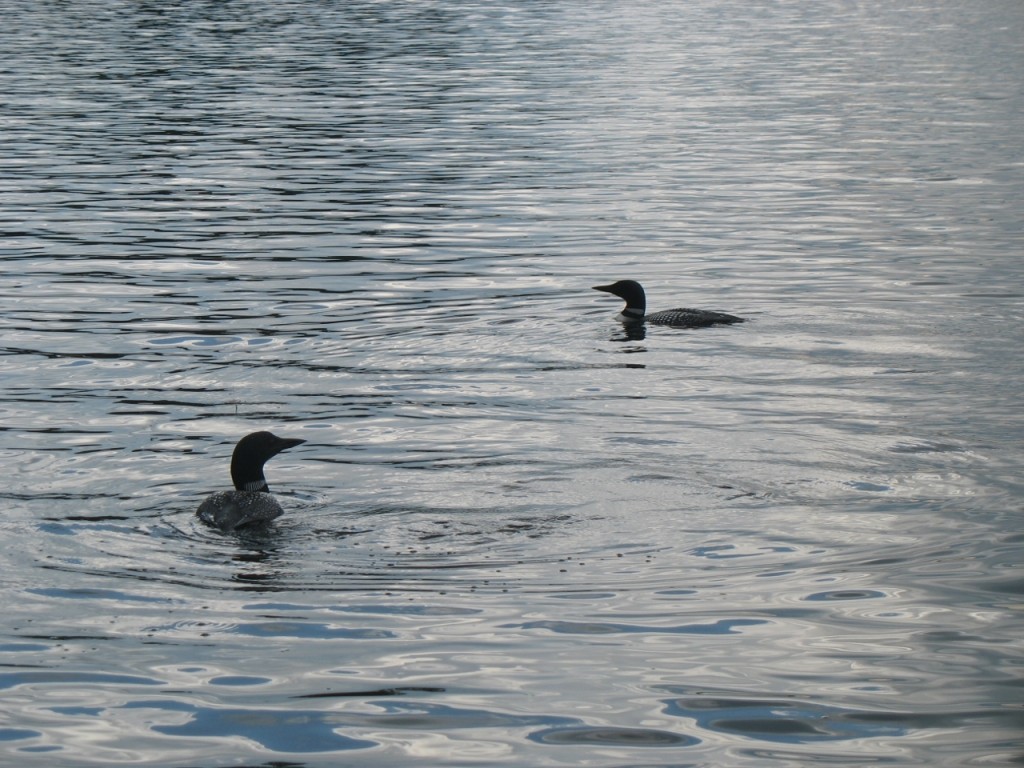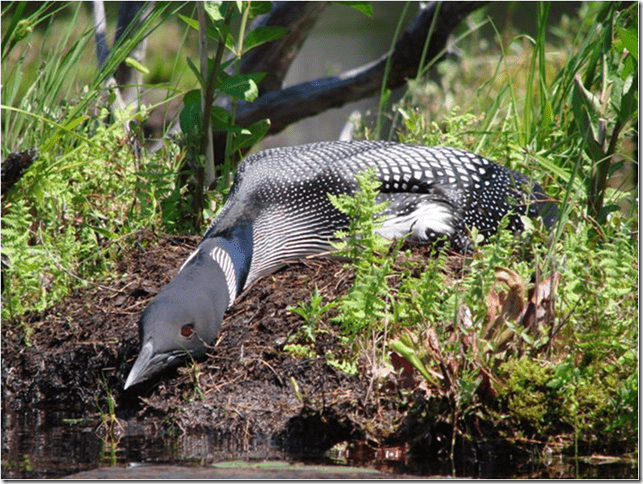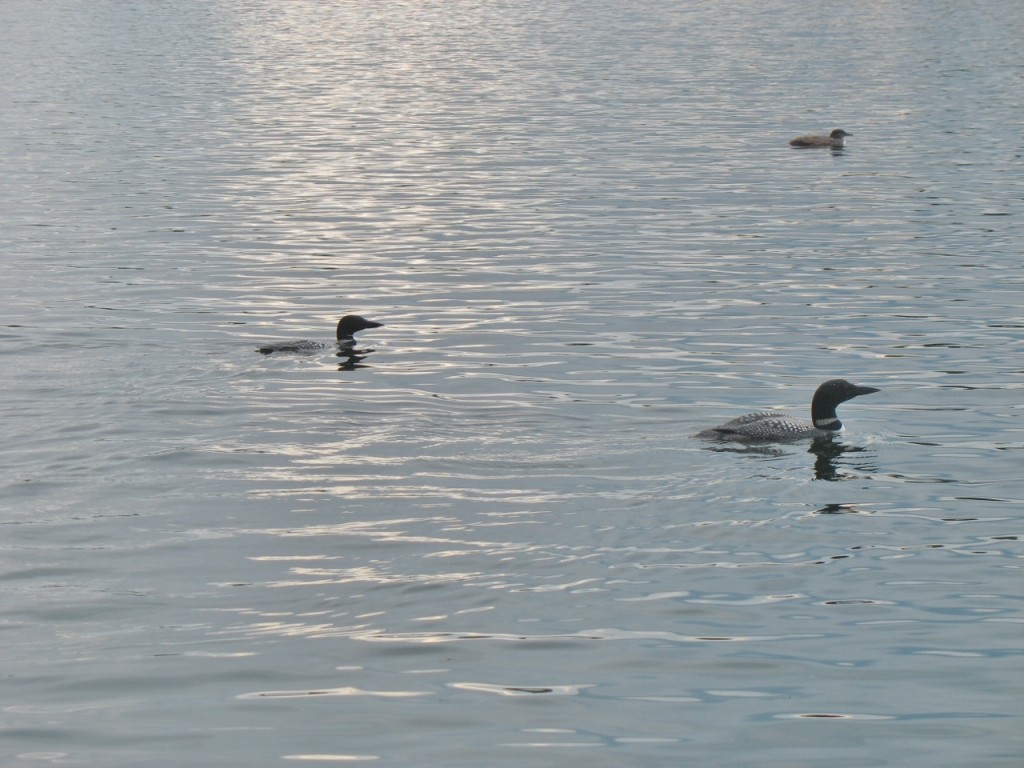Our iconic common loons are now gathering upon our larger lakes in large rafts all across Canada, ready for take-off to the warmer south for the winter. Groups of up to sixty should be found now on the Big Mississippi Lake.
Many of these local loons were counted this summer, as breeding pairs and chicks were surveyed during the Mississippi Lake Loon Survey conducted by members of the Mississippi Valley Field Naturalists (MVFN), in conjunction with the Mississippi Lakes Association (MLA). The Canadian Lakes Loon Surveys are conducted all across Canada by Bird Studies Canada.

MVFN observers were divided into four teams of two, and each team was supplied with an MLA boat driver. The teams paid three visits to the lakes, one in June, one in July and once more in August.
Team 1 consisted of Chris Baburek, Clayton, Anne Cameron, Carp and local driver Glen Moulton and they covered the Lower Lake. In June, they found three mated pair with three young chicks. In July, the same three pairs still had three chicks but, in August, one pair was found without chicks. The other two pairs seem to have moved further up the lake.
Team 2, consisting of David Garcia, Almonte; Chris Barlow, Blakeney; and local driver Ron Pollock, covered the Middle Lake. In June they listed three pairs of mated loons. Two pairs had a total of three chicks and one pair had none. In July, four pairs were counted, still with only three chicks. In August, two members were exchanged for Gloria Opzoomer and Paul Sprague, from the Balderson area. They counted five pairs of loons but no chicks accompanied the pairs. The chicks were either off on their own, not seen, or had been predated.
Team 3 had MVFN members Lynda Bennett, Clayton and Pat Enright, Blakeney. They were chauffeured by local boat driver Gregg Robinson and they covered “The Narrows.” In June, they counted two pair of adults, each with one chick; in July they found the same two pair, one with a chick and the other with no chicks. August yielded three pairs, each with one chick.
The Big Lake, by far the largest, was covered by Team 4, consisting of Cliff Bennett (count compiler) and Brenda Boyd, MVFN President, both from Clayton. Boat Driver was Rick Erskine from Innisville. In June, they found five pairs of loons and three singles, spread out over the lake. Of the pairs, two had one chick each and another had two chicks. No chicks were seen with the other two pairs. July’s count produced seven pairs. Two had two chicks each, one had one and four had no chicks. No singles were found, but in August the picture changed dramatically. Only three adults were found, and five juveniles, most on their own.


In summary, the maximum number of loons counted seems to total thirty-five adults, formed into seventeen pairs, with a total of eleven chicks. This was in July. In August, only seven chicks (now young, almost fully grown, juveniles) were found. This survival rate seems very low and could be attributed to predators such as pike, raccoons and maybe the pair of bald eagles which nested on Greig Island in the Big Lake, or a result of harassment from thoughtless or careless boat drivers. As human habitation overtakes more and more of the shoreline, loon nesting opportunities will diminish. Loon nesting platforms should be considered in certain discreet locations. Loon populations are a great indicator of a healthy lake.
Submitted by Cliff Bennett







